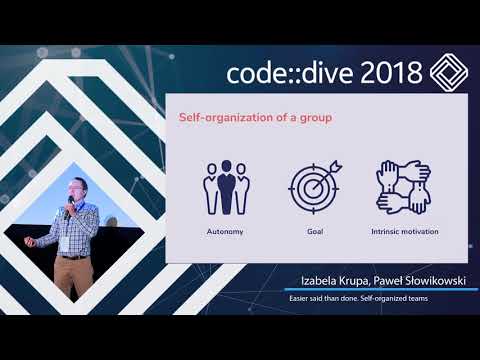Description:
Explore the complexities of building self-organized teams in this insightful conference talk from code::dive 2018. Delve into the misconceptions surrounding team formation and discover what it truly takes to create high-performing, self-organized groups. Examine individual behaviors and attitudes that support team self-organization, drawing from research, models, and practical implementations. Learn about risk management, group development processes, proactivity, assertiveness, situational leadership, and system complexity. Investigate factors that facilitate collective intelligence, motivation techniques, and modern organizational concepts like Teal and Holacracy. Gain a deeper understanding of team dysfunctions, conflict levels, and the key aspects that define truly self-organized teams. Challenge common myths and gain valuable insights for both team members and those responsible for fostering high-performance teams in Agile environments.

Easier Said Than Done - Self-Organized Teams
Add to list
#Conference Talks
#Code::Dive
#Business
#Corporate Governance
#Risk Management
#Personal Development
#Self Improvement
#Assertiveness
#Social Sciences
#Psychology
#Motivation
#Computer Science
#Artificial Intelligence
#Collective Intelligence